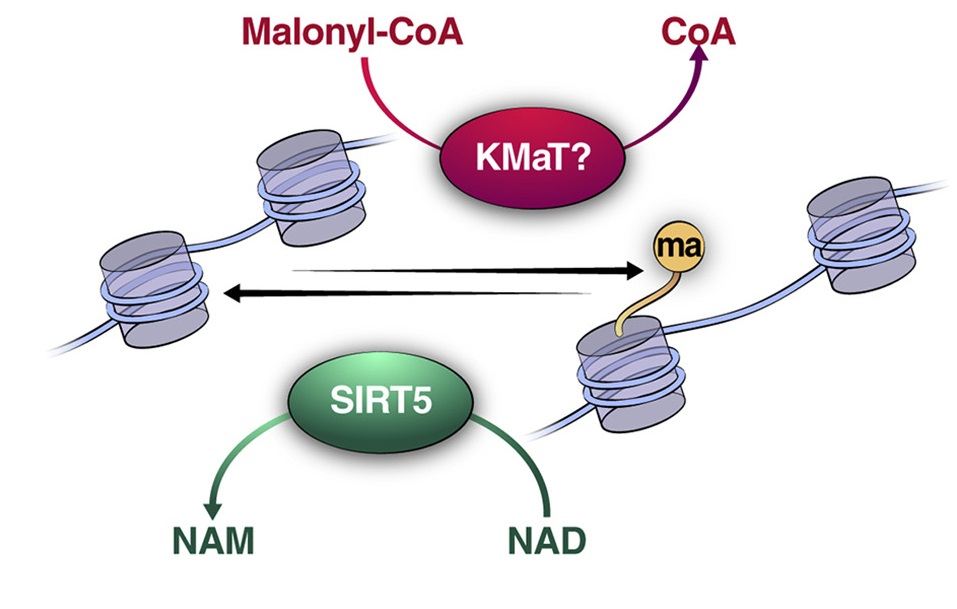Histone Malonylation Analysis Service
Based on a high-resolution liquid chromatography-tandem mass spectrometry (LC-MS/MS) platform, the histone malonylation analysis service launched by MtoZ Biolabs provides precise detection and quantitative analysis of histone malonylation modifications. This service can identify malonylation modifications on histone lysine residues and analyze their abundance changes under different conditions. By integrating bioinformatics methods, the service provides data on modification site distribution, abundance variation, differential analysis, and functional annotation. This service offers data support for epigenetics, metabolic regulation, and cellular function studies, helping researchers explore the role of Kmal modifications in cell biology.
Overview
Histone malonylation (Kmal) is a post-translational modification in which a malonyl group is attached to histone lysine residues, and is widely related to cell metabolism and epigenetic regulation. Kmal plays an important role in chromatin structure regulation, gene transcription, and cellular responses, particularly in metabolic stress, energy balance, and cell differentiation. This service provides precise analysis of Kmal modifications, offering support for fields such as epigenetics, metabolic research, and cellular function studies, helping researchers gain deeper insights into the role of Kmal in cell biology.

Zhang, R. et al. iScience, 2023.
Figure 1. Schematic of the Regulation of Histone Malonylation.
Analysis Workflow
1. Histone Extraction
Histones are isolated from cell or tissue samples to ensure the integrity and stability of the modifications.
2. Peptide Enrichment and Digestion
Optimized digestion conditions and specific enrichment strategies are applied to enrich malonylation-modified peptides.
3. LC-MS/MS Detection
High-resolution mass spectrometry platforms are used to precisely analyze modification sites and perform quantification.
4. Data Analysis
Bioinformatics tools are employed to provide analysis results including modification site distribution, abundance changes, and functional annotations.
Sample Submission Suggestions
1. Sample Type and Quantity

Note: Plasma should be collected using EDTA as an anticoagulant. Standard tissue or cell lysis buffers can be used during protein extraction.
2. Sample Transportation
Avoid repeated freeze-thaw cycles. Samples are recommended to be stored at -80°C and transported on dry ice to ensure low-temperature conditions throughout the process and prevent modification loss.
Note: For special samples or if a detailed submission plan is required, please contact MtoZ Biolabs technical staff in advance.
Service Advantages
1. High-Precision Detection
Utilizing the LC-MS/MS platform, malonylation modification sites are accurately identified, ensuring high accuracy in detection results.
2. Optimized Enrichment Strategy
Efficient peptide enrichment methods are employed to enhance the detection rate and coverage of modification sites, improving data quality.
3. Strict Quality Control
Standardized operating procedures and stringent quality control ensure the stability and reproducibility of experimental results.
4. Customized Analysis Plan
Experimental plans are flexibly adjusted based on sample types and research requirements to meet diverse experimental needs.
Applications
1. Epigenetics Research
Study the role of malonylation modifications in chromatin structure regulation and gain a deeper understanding of epigenetic regulatory mechanisms.
2. Metabolic Regulation Research
Histone malonylation analysis service can be used to explore the relationship between Kmal modifications and energy metabolism as well as cellular metabolic states.
3. Potential Biomarker Discovery
By identifying modification patterns associated with specific physiological or pathological states, this service helps in novel biomarker screening.
4. Cell Differentiation and Development Research
Histone malonylation analysis service can be used to study the dynamic changes of malonylation during cell differentiation and development.
FAQ
Q1: How Does Malonylation Modification Differ from Other Modifications (Such as Acetylation or Methylation)?
A1: Malonylation modification (Kmal) is a relatively new epigenetic modification. Its malonyl group has a larger spatial volume and stronger polarity, which can have a more significant impact on chromatin structure compared to acetylation and methylation. Unlike acetylation, which is commonly associated with transcriptional activation, malonylation plays a crucial role in metabolic regulation, cellular response, and energy balance, giving it unique biological functions.
Q2: What Modification Sites Can This Service Analyze?
A2: We can analyze malonylation modifications on histone lysine residues, including known modification sites such as H3K9 and H3K27. Different sites may have different biological functions, so site-specific analysis is critical.







